Edinburgh Fringe
When things are quiet here it’s usually a sign that I’m busy. Or possibly uninspired. This is definitely the former.
Timandra Harkness has a new Wellcome-backed show coming to the Edinburgh Fringe this year, BrainSex. We’ve been making a bunch of insert films for it, including this Kubrik homage in St. Andrews:
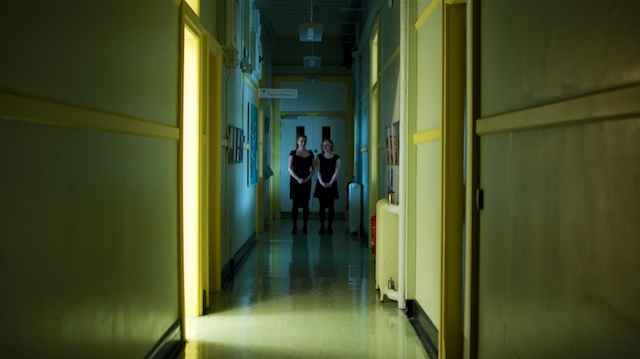
…which leads to an oddly stand-offish deep two sequence of which I’m unreasonably proud. Partly because I only had two lamps and a miniature LED panel to light it with.
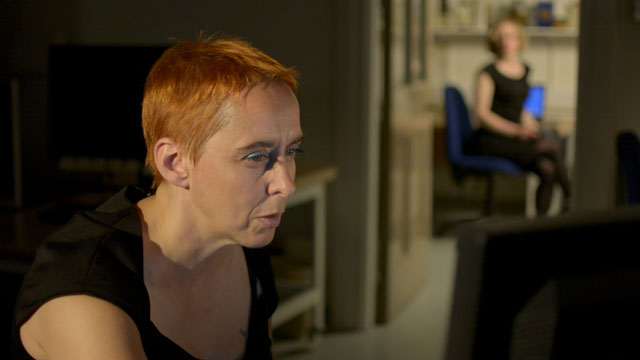
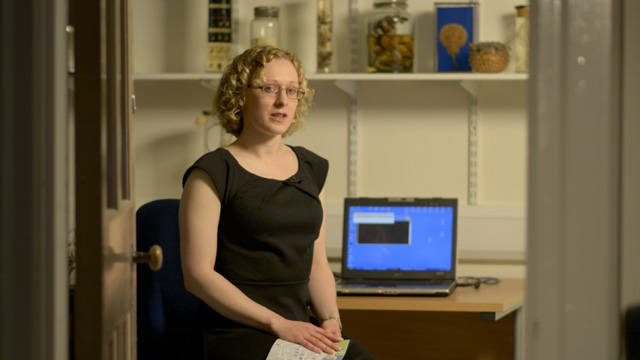
In a second St. Andrews film this leads to a Prisoner pastiche:
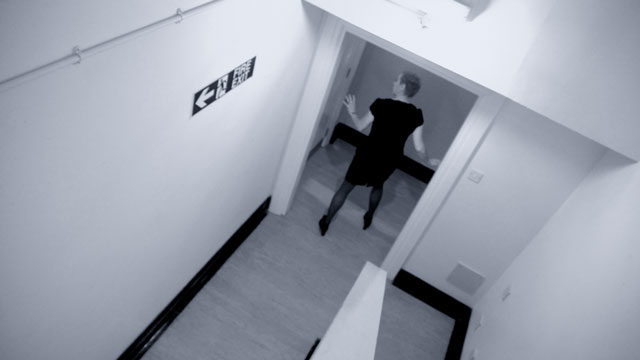
It was a roller coaster shoot. We wrote and shot the two St. Andrews film in a day, wrapping at 22:30 then driving to Newcastle. The following day we did the rest of the A1, and found ourselves desperately tweeting to see if anyone we knew had a Spitfire we could film with, like, tomorrow. That actually worked, more-or-less:
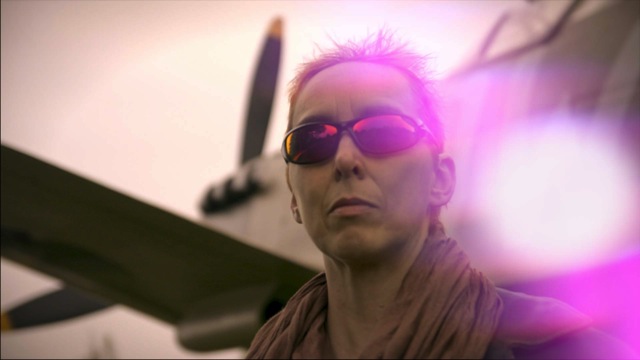
…and at the same location we shot this:
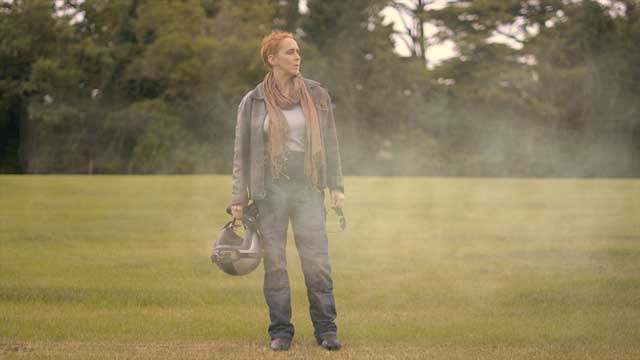
…and this:
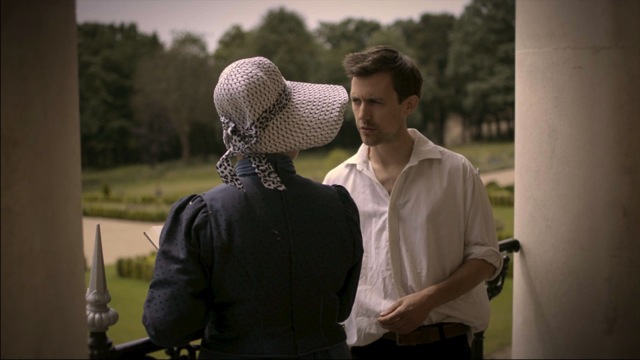
John Stuart Mill quotes make for lousy Powerpoint slides but rather entertaining costume melodrama, Timandra reckons.
This was the first shoot on which I’ve used the Nikon D7100. For the most part I’m happy. Nikon’s software continues to be thoroughly braindead when it comes to video, but the pictures are mostly quite lovely. In low-key situations it needs help from NeatVideo to remove fixed-pattern noise, but the results look clean and it’s certainly sharper than early video DSLRs. Dynamic range is impressive, I had no overheating problems despite filming in a blisteringly hot studio for a day, high-ISO performance is good, and not having to worry about moiré is a blessed relief.
I’m mostly working with the D7100 on a minimal Zacuto rig, with a SmallHD DP4 EVF and a JuicedLink preamp. The resulting package looks like an explosion in a cable factory and is starting to get heavy, but at least it functions a bit more like a proper video camera. I wish the DP4 had zebras.
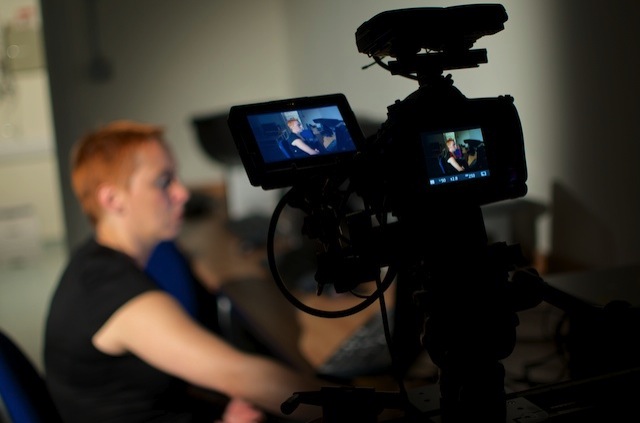
Lenses span the full set: Nikkor 35/1.8G, 50/1.4G, 85/1.8G, 105/2.8 Macro; vintage Nikkor 50/1.4 and 80-200/4. My default lens for handheld work is still a Sigma 17-50/2.8, which suffers all manner of quirks but for the most part I rather like them. I even used the Sigma 10-20/4-5.6 for a couple of shots.
Grading mostly in Final Cut Pro X, though my plugin collection continues to grow and there are often layers of stuff going on with these shots. The D7100 benefits from a smidge of sharpening in post, interestingly.
You can catch BrainSex at the George Square Box 1st—26th August. Tickets.
Future of TV
I haven’t found time to fully digest Ben Thompson’s series on the future of TV, let alone think through the implications for the UK model, but they make fascinating reading. I found myself nodding in agreement, frowning as I pondered how the ideas translated (which typically means: how the existence of the BBC distorts things, for good or ill), and occasionally grimacing in disagreement.
Well worth your time, and mine.
[edit: also worth a look is The Verge’s response to Amazon Studio’s first round of TV shows. Spoiler: they think they suck. Television, it turns out, is hard. Who knew?]
Pendulums
Over at StoryCog side-project ScienceDemo.org, it’s Pendulum Week! Be sure to visit for your daily dose of swing-based inspiration.
(Yes, we know this is a bit weird. Roll with it, we’re still exploring what we want ScienceDemo.org to be: feedback welcome!)
Craft
Another unapologetically out-of-context quote from Matterson’s article at the BSA:
“Those providing informal learning tend to be driven by their passion and creativity. They evaluate their activities, but the evaluations tend to be locally derived, formative and not linked to research. […] It seems that practitioners can best be characterised as craftspeople, operating through a model of apprenticeship, observation and audience approval. This contrasts with the ‘professional’ tradition whereby formalised mechanisms are developed to record knowledge and train new and existing entrants.”
One of my problems with UK science communication is that it’s managed largely by scientists, who are highly trained to recognise and value only things they can categorise and/or measure.
“There are more things in heaven and earth, Horatio,
Than are dreamt of in your philosophy.”
I’m a film-maker. I’m proud to be a craftsman. When behind the lens I delight in the play of light over form; as a director I seduce my presenters into delicate subtlety and nuance, and I obsess over individual edits to a level of finesse my clients will never notice. I’m never satisfied, and it’s always the next film which might reach the standards I set for myself.
My point in the previous post was intended to be: if we aim for science to be a cultural activity, we have to engage with the language and practices of culture. The objectives of cultural activities are rarely ‘learning outcomes’, they’re often far less tangible.
This is why I’ve always been wary of the ‘evaluation is the only true measure of success’ line of thinking. Evaluation is tremendously important and valuable, but it doesn’t capture everything. It doesn’t always tell you if something’s plain shit.
[—edited for clarity, 11/4/2013]
I am not an ‘educator’
One of things I rather like about the UK STEM engagement scene is that we haven’t started using the US phrase “Informal Science Education.” I’ve tremendous respect for education, but the word doesn’t capture all of what I’ve been doing for the last twenty years. So I get a little worried when I read articles like that by Clare Matterson at the BSA site.
Amongst a few sweeping statements (“Those between five and 16 years old are well served”?), these phrases occur in consecutive paragraphs:
“We need a basket of ‘killer facts’ to show that informal learning is not a ‘nice to have’, but a critical component of effective science education.”
&
“Adults are under-served, suggesting that messages about the cultural importance of science to adult society are neglected.”
Hang on: we’ve gone from ‘informal education’ to ‘learning’ to (what appears to be) ‘formal education’, and now to ‘culture’. Which is it?
We’re not going to progress the cultural aspirations of science by using the tools of formal education to measure that progress.
[—edited for clarity 11/4/2013]
Showreel
We’ve (finally) cut a showreel. It features Richard Dawkins, Dava Sobel, Steven Pinker, David Attenborough, Jem Stansfield, Bruce Hood, Alok Jha, Matt Parker, Jon Butterworth… and a lobster.
Showreels, it turns out, are hard. In our case, we’re aware that many potential clients come across our work via some of the more straightforward films we’ve made. It can be tricky to convince them that’s an aesthetic or narrative choice rather than an indicator of our range or inclination, so we wanted a showreel that demonstrated:
- The spread of people with whom we’ve worked.
- Our eye as photographers.
- We’re really good at detailed, close-up, practical science.
- Punchy editing.
- Some serious content.
- …and a sense of whimsy and wit.
Success?
Voice and Tone
“Voice and Tone: Creating Content for Humans at MailChimp” – Kate Kiefer Lee at Confab:
She described part of her job as being “to guard MailChimp’s voice, and keep it consistent across a huge range of content.” She said that the voice stays the same, but the tone changes all the time. Emotions are key to her belief on how important this. The way we write copy on the web affects the way people feel. And, she said, if you get it right, you can “get people to do stuff” — visit websites, buy products, subscribe to services.
via currybetdotnet — Martin is bravely attempting to live-blog the Confab conference, which I’ll confess I only heard of via his blog (RSS: not dead yet, whatever Google thinks).
This is good stuff. I forget, sometimes, that I learned to write primarily by writing for others. Most of the time when you’re writing for speech it’s important to have a voice in your head; when scriptwriting that has to be your character or performer’s voice, not your own. Scriptwriting is an acting job too.
Less obvious, perhaps, is that every organisation should be concerned about its voice and tone. It sounds like Kiefer Lee did a good job of articulating how that can impact the organisation’s bottom line. Read the rest of Martin’s post for some good practical advice.
Another terrific source on this is an interview with Mars Phoenix twitter writer Veronica McGregor, which still ranks as one of the STEM engagement projects I most admire.
Why filming is slow
Learning to light continues to be one of the most fun parts of my work. This tutorial doesn’t do anything beyond basic three-point lighting for a three-camera interview, but it’s weirdly compelling:
I like it partly because it illustrates why making films can be slow. That’s a lot of work, people and gear to make an interviewee and their interviewer look good.
If you’re looking at films you’ve made or commissioned and thinking “we used great cameras, why does it still look rubbish compared to broadcast?” — this is why. Prep, gear and crew all cost money: sometimes they’re worth it.
Too much information?
Here’s a summary of Dr. No:
The Western world falls under the shadow of a great and mysterious evil. The source of the threat is traced to a monstrous figure, the mad and deformed scientist Dr. No, who lives half across the world in an underground cavern on a remote island. The hero James Bond goes to the armourer who equips him with special weapons. He sets out on a long, hazardous journey to Dr. No’s distant lair, where he finally comes face to face with the monster. They enjoy a series of taunting exchanges, then embark on a titanic struggle. Against such near-supernatural powers, it seems Bond cannot possibly win. But finally, by a superhuman feat, he manages to kill his monstrous opponent. The shadowy threat has been lifted. The Western world has been saved. Bond can return home triumphant.
I’ve chosen that version from The Seven Basic Plots by Christopher Booker, which uses this particular form to illustrate that Dr No shares the same core story as Gilgamesh, written four or five thousand years earlier. Cute.
My point is slightly different, in that you’ve just read a 135-word summary of a 110-minute film. You can comfortably read 135 words, aloud, in under a minute. I just tried, and not just reading but performing that paragraph I clocked myself at 42 seconds. Whatever, the implication is that the running time of Dr No comprises roughly 1% information. What’s the other 99%?
Aesthetics. Emotion. Character.
My hunch is that most fiction fits the same sort of pattern. Where it doesn’t — Game of Thrones, anyone? — we get easily confused, baffled by the number of ideas and suffocating under the proliferation of cast. So, by way of comparison, how do we go about planning science media?
We pack as much information in as possible. In a demonstration lecture we rely on the ‘demonstration’ to drive attention, and shy away from the ‘lecture.’ We run away from aesthetics, emotion and character, which leaves only exposition — and we’re at least dimly aware exposition is the dull bit. Best throw in another explosion.
So we flit from one set-piece to another, relentlessly seeking pace!, excitement!, fun!, inspiration!
Dr. No contains its share of fun, excitement and pace. They’re not without purpose, and we’re not wrong to include them in our work. But our choice to shy away from aesthetics and emotion and character does not always serve us well. We should be good at those things too, and deploy them when they can be effective.
There’s a terrific example to be had in Brian Cox’s recent series Wonders of Life, which took Brian’s trademark emotion and returned an aesthetic sense we’ve not seen in science documentary for some time (if ever, frankly). I’ll have more to say about Wonders of Life in subsequent posts, it’s a fascinating case study. I wasn’t a complete fan.
Graduates in STEM ‘need to rise by half’
The majority of future STEM jobs will be in engineering, requiring almost one in five 21-year-olds to enter the profession between now and 2020
(— via Times Higher Education )
This is reported from a Social Market Foundation report, *In the Balance: The STEM human capital crunch”. The SMF’s own press release leads with the, to my mind, even more explosive:
The Government’s aim to rebalance the economy away from financial services is inconceivable due to a 40,000 per year shortage of home-grown graduates in the science, technology, engineering and maths (STEM) sectors
Their argument appears to be based on last year’s RAEng report Jobs and Growth: the importance of engineering skills to the UK economy (link currently goes to a PDF). I haven’t seen much discussion of that report, despite how crucial its conclusions appear to be.
If this is even vaguely correct, those of us working in STEM engagement and education are tackling not a minor, trivial, spare-time sort of problem, but a major national crisis. Surely.
Surely?
The timescale being discussed is ‘by 2020’: people who’d graduate from straight-in 4-year degrees in 2020 have already started their GCSEs. Heck, they’re the generation who might still remember my CITV science shows from when they were 9. You know, before science was removed from children’s TV altogether. And they’re the last year group to fall within this study — everybody for the years before 2020 is already in the pipeline. We can fret about conversion rates, but the ball is already in the roulette wheel and where you place your bet is somewhat irrelevant at this point.
I’ve been meaning to write about this — shout about it — since I first heard of the RAEng report last November. I’m still stunned that nobody seems to be running around screaming that the house is on fire.
I’m particularly baffled that the engineering sector doesn’t appear to see this as a crisis. As their crisis. Why aren’t they frantically looking around the sector, wild-eyed with terror, desperate for anything that might make a difference?
Have they given up? Do they not want to invest? Do they think the Big Bang Fair and Queen Elizabeth Prize have them covered? Perhaps they don’t think this is a tractable problem?
I’m genuinely confused.